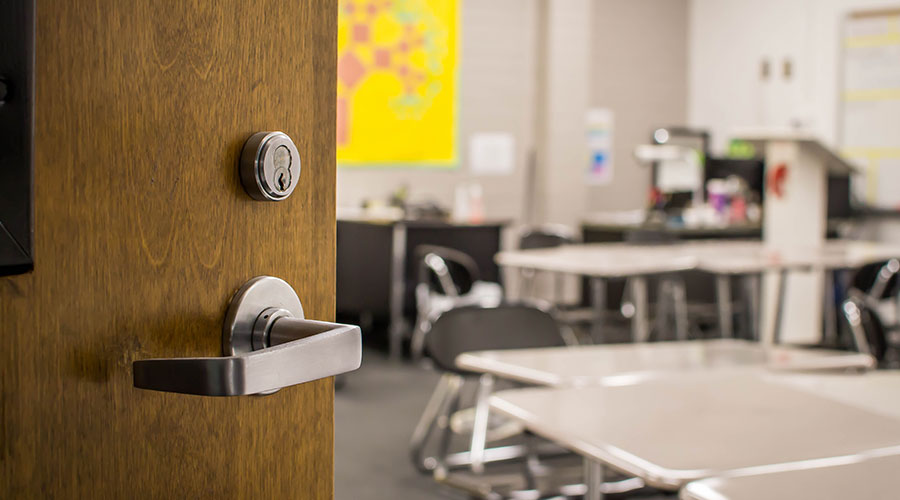How To Get The Most From Your Doors And Door Hardware
To get the most out of your doors and door hardware, keep in mind that there are times when you're going to have to solve an unusual problem. Several years ago, officials at the Staples Center in Los Angeles called Scott Sabatini, associate principal at Door and Hardware Consultants, with a problem: A star basketball player, frustrated when his team lost, kicked a door hard enough to damage it. What kind of door would be athlete-proof?
Sabatini visited the arena. A blast-resistant door would meet the case, he said. But it would also need a stronger frame and a stronger wall; it would cost $25,000, and it might break the athlete's leg. Officials assured him that they had no intention of risking a multi-million-dollar body, but they did intend to raise the player's fine for kicking the door from $10,000 to $25,000. Sabatini says that at the officials' request, he explained the situation to the athlete, who politely agreed that the increased fine was worth it.
The Staples Center situation might be an unusual problem, but it was certainly an issue that required more than the usual attention. Similarly, many other issues with doors and openings deserve more attention than they usually get. Choosing the right door and hardware means matching the appropriate product to the function of the space, while considering issues such as first cost versus life-cycle cost, amount of use, maintenance requirements, security, and fire and life safety codes.
Demands On Doors
Doors are divided into three classes based on durability, and "the number of cycles to failure is hugely different," says Tom Westerkamp, an independent consultant and author of "The Maintenance Manager's Standard Manual." A Class 1 school door, for instance, which may be opened hundreds or thousands of times a day, "somewhere at the end of the third year, you're going to think about replacing that door." A department store, with even heavier foot traffic, may check the performance of its exterior doors several times a day, Westerkamp says.
Door hardware includes items such as frames, locks, handles and hinges, all of which have to work together as a system. The impact of regular door closing may knock a frame out of alignment, and "adjusting the door doesn't necessarily fix the problem," Westerkamp says. "Hinges can really mess up a door lock and hardware."
Facilities installing doors should refer to ANSI A156, as well as to local building codes, as a starting point for deciding on appropriate products. An electronic lock system will also have to meet FCC rules for frequency ranges, Westerkamp says.
Environmental codes also affect door installations, because any opening is a potential point for heat loss. Sabatini says that California's CALGreen code is stricter than LEED requirements, and may spread to other states.
Mark Hallgren, president of the Hallgren Co. and a past president of the Door and Hardware Institute, says that building codes are changing, particularly in the West, to offer greater protection in windstorms. Rooms such as the cafeteria are now considered to be safer storm refuges than hallways, but that also means that "the whole envelope of the cafeteria has to be designed to protect it."
If an interior space changes function, it's "a good time to review," Westerkamp says. "That's why it's important to keep good records of what's installed." A space going from heavier use to lighter use may as well keep its door, but a space that will soon see more traffic may well need a more durable door and associated hardware.
Related Topics:













